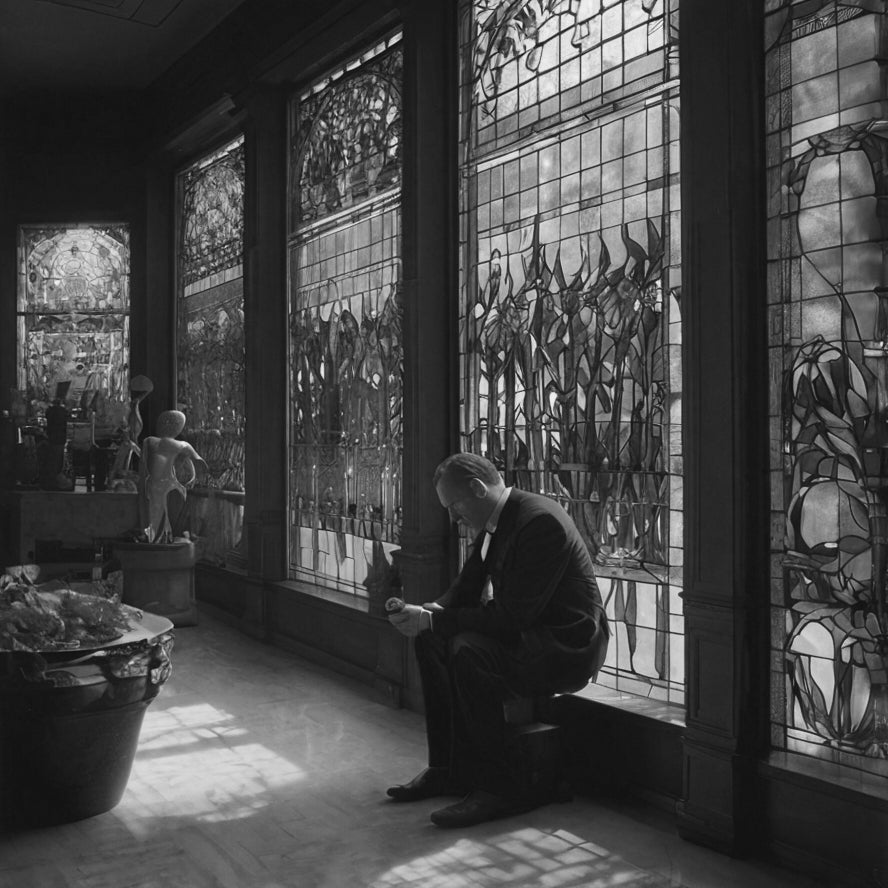
The Radiant Legacy of Stained Glass: From Cathedrals to Contemporary Art
Share

Stained glass is a timeless art form that has illuminated human creativity for centuries. From medieval cathedrals to modern urban installations, it has evolved through innovation, storytelling, and collaboration with architecture. But how did we get from Gothic rose windows to algorithm-designed panels? Let’s explore its history, techniques, and modern marvels.
A Medieval Symphony of Light
The origins of stained glass stretch back to ancient Rome and Egypt, but it was during the Gothic era (1150–1500) that it truly flourished. Cathedrals like Chartres and Notre-Dame de Paris transformed sunlight into divine storytelling. Craftsmen used sand, potash, and metal oxides (e.g., cobalt for blue, copper for green) to create vibrant colors. These pieces were cut, painted with iron-based enamels for details, and joined using lead cames (H-shaped strips). The result? Windows that narrated biblical tales to largely illiterate congregations (Metropolitan Museum of Art, Stained Glass in Medieval Europe, link, 2025).
This wasn’t just art; it was a multisensory experience. Imagine monks chanting hymns as sunlight streamed through intricate designs, creating a dance of light and shadow. Stained glass worked in harmony with other forms of expression, like poetry and music, to elevate the spiritual atmosphere.
Renaissance Realism and Industrial Reinvention
The Renaissance (15th–17th centuries) brought a shift in focus from religious themes to secular beauty. Wealthy patrons commissioned stained glass for private homes, while artists like Hans Holbein introduced realism into their designs. Innovations like silver stain—producing golden hues—expanded the color palette (Ceramics.org, The Rebirth of Stained Glass, link, 2024).
Fast forward to the 19th century, and the Arts and Crafts Movement revived stained glass on a grand scale. Louis Comfort Tiffany became a household name with his “Favrile” glass—a shimmering, iridescent material inspired by nature. His copper foil technique allowed for more intricate designs compared to traditional lead cames. Across the Atlantic, Charles Rennie Mackintosh’s geometric panels echoed the precision of classical music compositions. Stained glass had become more than a medium; it was now a bridge between fine art and functional design.
Modern Marvels: Breaking Boundaries
In the 20th century, stained glass shattered its traditional boundaries (pun intended). Artists like Jean Crotti experimented with abstract forms using gemmail—a technique layering glass without lead. Meanwhile, architects like Frank Lloyd Wright integrated stained glass into their designs as functional art, blending geometry with natural light in projects like his iconic Prairie-style homes.
Today’s artists are pushing the envelope even further. Tom Fruin’s stained-glass water towers in New York City bring bursts of color to urban skylines. Jeff Davis collaborates with French studio Ateliers Loire to use algorithms in designing panels that are handcrafted using medieval methods (LuxeSource, Traditional Stained-Glass Techniques Get New Life In This Collab, link, 2024). And Kelsie McNair is making stained glass accessible through workshops that teach people how to create their own luminous masterpieces.
The Construction Process: A Blend of Science and Art
Despite its evolution, the core process of making stained glass remains rooted in tradition. Artists begin with full-scale sketches called cartoons before cutting colored glass into precise shapes. Details are painted on using vitreous paints (a mix of powdered glass and pigments), then fired in kilns to fuse the designs permanently (Khan Academy, How Stained Glass Is Made, link, n.d.). The pieces are assembled using lead or copper foil and waterproofed with putty.
Modern technology has added new tools to this ancient craft. Studios like Judson in Los Angeles use fused glass techniques—melting colors together in kilns—to create photorealistic panels for contemporary spaces. This fusion of old and new keeps stained glass relevant in today’s architectural landscape.
Why Stained Glass Still Shines Bright
Stained glass has always been about capturing light—and by extension, hope and beauty. Whether it’s medieval craftsmen layering molten colors or modern artists merging algorithms with traditional techniques, this art form continues to evolve while staying true to its roots. It’s no longer confined to churches; you’ll find it in museums, public installations, and even coffee shops.
So next time you see sunlight streaming through a colorful window, take a moment to appreciate the centuries of artistry behind it. Stained glass do celebrate a timeless symphony between light, color, and human imagination.
References
1. Metropolitan Museum of Art, Stained Glass in Medieval Europe, https://www.metmuseum.org/essays/stained-glass-in-medieval-europe, 2025
2. Khan Academy, How Stained Glass Is Made, https://www.lessonplanet.com/teachers/khan-academy-how-stained-glass-is-made, n.d.
3. Ceramics.org, The Rebirth of Stained Glass, https://ceramics.org/ceramic-tech-today/the-rebirth-of-stained-glass-from-medieval-religious-art-to-modern-architectural-design-part-1/, 2024
4. LuxeSource, Traditional Stained-Glass Techniques Get New Life In This Collab, https://luxesource.com/article/stained-glass-art-jeff-davis-trame-paris, 2024
